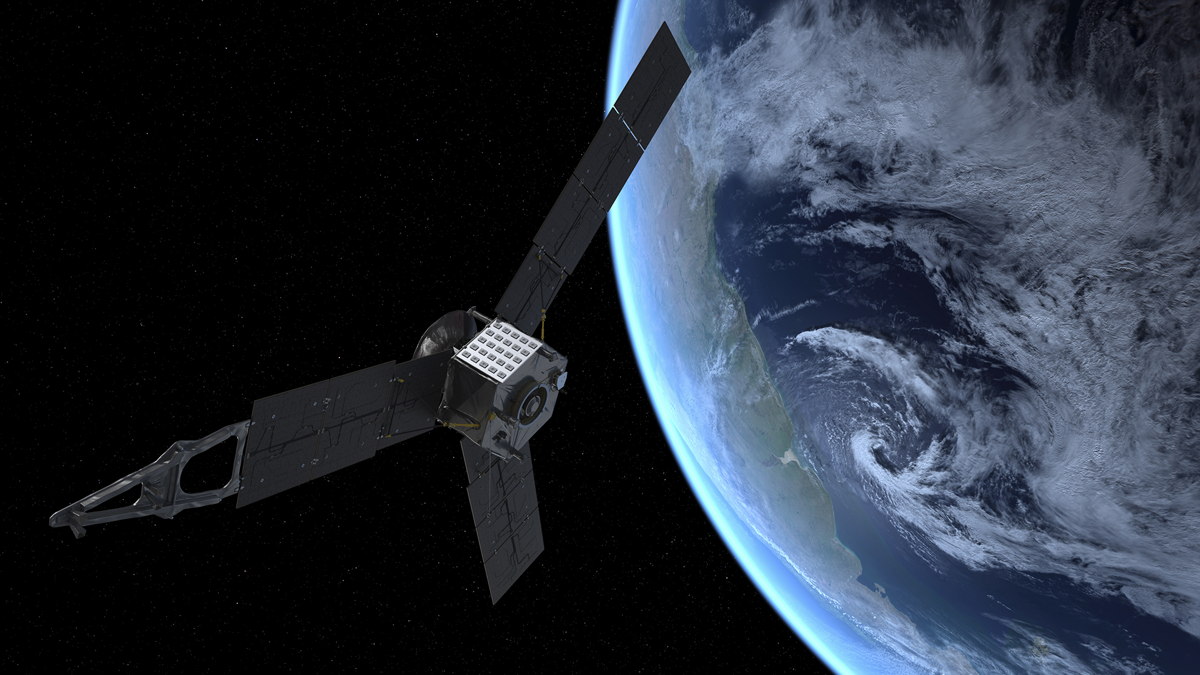
A NASA spacecraft bound for Jupiter went into a precautionary safe mode today (Oct. 9), shortly after completing a speed-boosting flyby of Earth.
NASA's Juno probe detected an anomalous condition and went into safe mode this afternoon after slingshotting around Earth to gain momentum for the long trip to the solar system's largest planet, according to media reports. While Juno's handlers are still trying to figure out what went wrong and how to fix it, they're hopeful that the problem won't threaten the $1.1 billion mission.
"We believe we are on track as planned to Jupiter," Juno project manager Rick Nybakken, of NASA's Jet Propulsion Laboratory in Pasadena, Calif., told the Associated Press. He described his level of concern as "moderate."
The Juno mission launched in August 2011 and is slated to arrive at the Jovian system in July 2016. The probe is so heavy — about 8,000 pounds (3,267 kilograms) — that its Atlas 5 rocket couldn't send it all the way to Jupiter by itself, so mission planners devised the Earth flyby to finish the job.
The flyby, which was highlighted by a close approach that brought Juno within just 347 miles (558 kilometers) of Earth at 3:21 p.m. EDT (1921 GMT), was designed to boost the probe's speed from 78,000 mph (126,000 km/h) to 87,000 mph (140,000 km/h), mission officials said.
Once Juno enters orbit around Jupiter, it will study the gas giant's atmosphere, gravitational field and magnetic field with nine science instruments over the course of a full Earth year. Scientists hope the probe's observations reveal insights about Jupiter's formation, structure and composition, including whether or not the planet possesses a solid core.
While the main purpose of today's flyby was to give Juno a speed boost, mission officials also planned to check out the spacecraft's science gear during the maneuver.
Get the Space.com Newsletter
Breaking space news, the latest updates on rocket launches, skywatching events and more!
The Juno team was also planning to take pictures of the Earth-moon system. The probe returned surprisingly little data during the flyby, the AP reported.
Follow Mike Wall on Twitter @michaeldwall and Google+. Follow us @Spacedotcom, Facebook or Google+. Originally published on SPACE.com.
Join our Space Forums to keep talking space on the latest missions, night sky and more! And if you have a news tip, correction or comment, let us know at: community@space.com.

Michael Wall is a Senior Space Writer with Space.com and joined the team in 2010. He primarily covers exoplanets, spaceflight and military space, but has been known to dabble in the space art beat. His book about the search for alien life, "Out There," was published on Nov. 13, 2018. Before becoming a science writer, Michael worked as a herpetologist and wildlife biologist. He has a Ph.D. in evolutionary biology from the University of Sydney, Australia, a bachelor's degree from the University of Arizona, and a graduate certificate in science writing from the University of California, Santa Cruz. To find out what his latest project is, you can follow Michael on Twitter.









